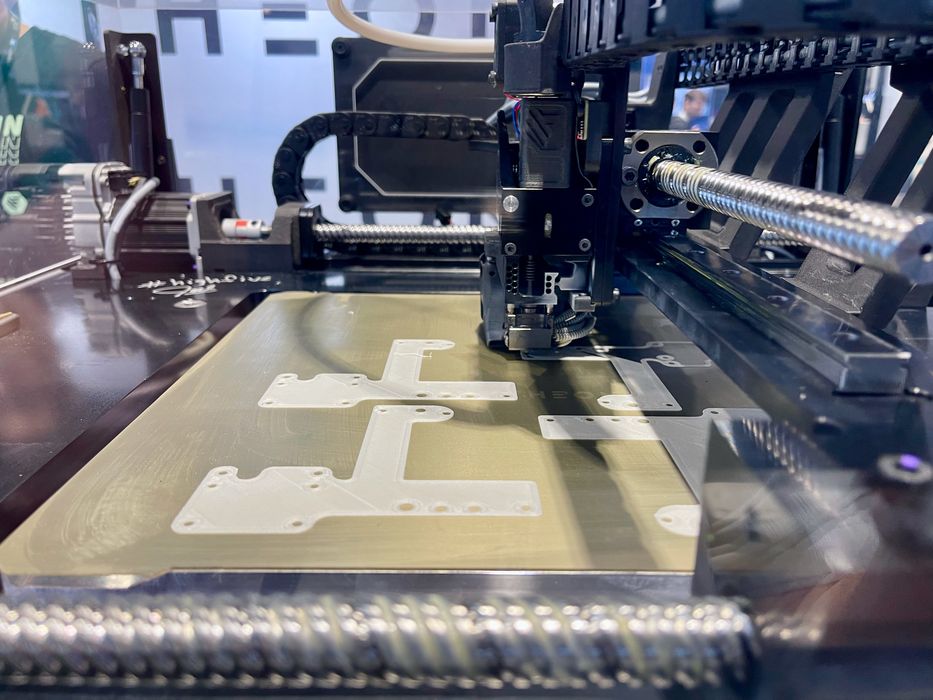
Pantheon has been making big strides forward with their incredible high-speed carbon fiber 3D printer, the HS3.
If you’re not familiar with Pantheon, they are a relatively new company based in Vancouver. We had the opportunity to check out one of their early machines, it found it to produce incredibly high quality 3D prints in carbon fiber-infused material.
Our look at the HS3 machine was quite early; in fact it was apparently the very first machine the company shipped offsite to anyone. We treated the machine carefully, and learned quite a bit about it.
Since our experience, the company has been diligently refining the machine to transform it into a fully deployable package for real customers. We had a chat with them at RAPID+TCT and found out their current status.
Evidently the company is doing very well, having sold something like 35 machines to a variety of customers seeking high speed 3D printing. In fact, we’re told they are actually backordered due to the demand, and you must now wait 6-8 weeks for a unit.
I’m not surprised at all, given what we saw with the prototype alpha HS3 we tested. It produces precision parts in record time. Once customers understand that, they’ll buy the machine.
At this point we are told the design of the machine is stable and they’re focusing mostly on sales, manufacturing and support. But what has changed since our review?
It turns out they’ve made several major changes, although only a few are visible. One major change is a shift to a Linux OS, which apparently made life a lot easier for their developers.
They’ve also switched from Duet controller boards and that firmware to Klipper, which should provide even more high speed benefits as it includes a number of high speed 3D printing features, such as Input Shaping. It’s quite astonishing to realize their original machine achieved near-perfect high speed prints — without Klipper. I’m really interested to see what they can achieve with Klipper.

They’ve also tweaked the extruder and print surface since our experience, and those changes can only make the machine even better.
Finally, they’ve added a dry box as an accessory to help condition the filament before printing, which should make the prints even more reliable. This could also open up the possibility of using more types of materials in the HS3.
For sales, it seems that they have opened up business in Northern Europe with a distribution arrangement with an integrator. That should increase the company’s sales significantly, as up to now they’ve only sold in North America.
Another tweak that should increase sales is the price. They’ve lowered the price of the HS3 to only US$10,000, quite a bit less than originally envisioned. I presume they’ve found ways to manufacture the machine at an optimized cost, and are passing the savings along to the public.
If you’re interested in true, industrial high speed 3D printing, you should definitely check out the Pantheon HS3.
Via Pantheon Design
